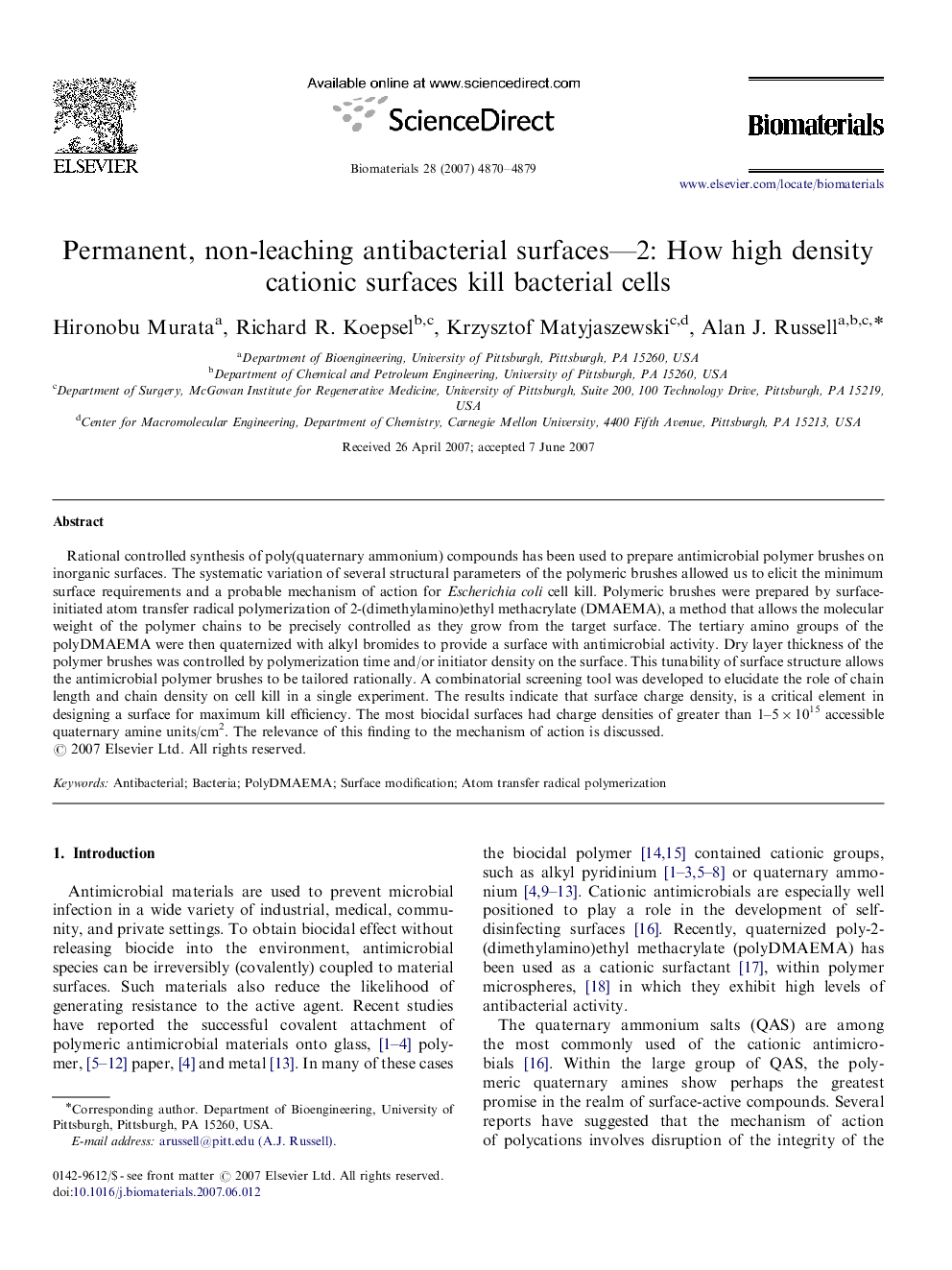| کد مقاله | کد نشریه | سال انتشار | مقاله انگلیسی | نسخه تمام متن |
|---|---|---|---|---|
| 10655 | 696 | 2007 | 10 صفحه PDF | دانلود رایگان |

Rational controlled synthesis of poly(quaternary ammonium) compounds has been used to prepare antimicrobial polymer brushes on inorganic surfaces. The systematic variation of several structural parameters of the polymeric brushes allowed us to elicit the minimum surface requirements and a probable mechanism of action for Escherichia coli cell kill. Polymeric brushes were prepared by surface-initiated atom transfer radical polymerization of 2-(dimethylamino)ethyl methacrylate (DMAEMA), a method that allows the molecular weight of the polymer chains to be precisely controlled as they grow from the target surface. The tertiary amino groups of the polyDMAEMA were then quaternized with alkyl bromides to provide a surface with antimicrobial activity. Dry layer thickness of the polymer brushes was controlled by polymerization time and/or initiator density on the surface. This tunability of surface structure allows the antimicrobial polymer brushes to be tailored rationally. A combinatorial screening tool was developed to elucidate the role of chain length and chain density on cell kill in a single experiment. The results indicate that surface charge density, is a critical element in designing a surface for maximum kill efficiency. The most biocidal surfaces had charge densities of greater than 1–5×1015 accessible quaternary amine units/cm2. The relevance of this finding to the mechanism of action is discussed.
Journal: Biomaterials - Volume 28, Issue 32, November 2007, Pages 4870–4879